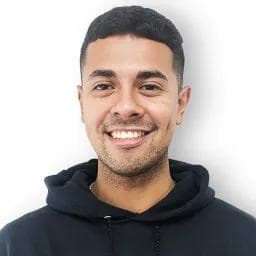If your website is your #1 growth tool (and for most B2B brands, it is), replatforming it is one of the most strategic decisions you’ll make this year. But most marketing teams go into migration projects without a clear roadmap—or a reliable cost estimate.
The truth? Migration costs vary wildly based on your stack, your goals, and how you approach the project. Whether you're moving off WordPress to a headless CMS, consolidating fragmented systems, or leveling up your performance with a composable architecture, the decisions you make early on will directly affect your cost, timeline, and long-term ROI.
At Webstacks, we’ve led website migrations for fast-scaling SaaS, FinTech, and Web3 companies. This guide is based on what we’ve seen across dozens of successful projects—what actually drives cost, where teams overspend, and how to think about migration as an investment in your site’s future, not just a line item.
What is a Website Migration?
A website migration is the process of moving a website from one environment to another. It involves transferring all website files, databases, and settings to a new host, server, or domain. Redirects are set up to ensure users and search engines can find the new site location.
A migration is much more complex than "moving content." You are battling to preserve (and ideally improve) performance, SEO equity, and editorial workflows—without disrupting your users, your team, or your growth engine.
For marketing leaders, the success of a migration shows up in how quickly your team can publish after launch, how fast your site loads, and whether you gain or lose organic visibility in the process.

How Much Does a Website Migration Cost?
Before you look at numbers, you need to look at context. There’s no one-size-fits-all pricing model for website migrations, because every site is different.
Here are the biggest variables that affect what you’ll spend:
Factors That Drive Website Migration Cost
- Website Size & Structure How many pages are being migrated? Are they static, dynamic, or highly templated? Larger content libraries (especially those with poor taxonomy) add complexity.
- Your Current Tech Stack Are you migrating off WordPress, a monolithic CMS, or a custom-built legacy system? Older stacks often require manual workarounds that increase dev time.
- Your Target Tech Stack Moving to a composable architecture? Headless CMS? Building with Gatsby or Next.js? The modern stack you choose will shape both the build and the ongoing marketing workflow.
- Level of Customization Will you be rebuilding a modular component library, redesigning your frontend, or creating new editorial workflows? The more tailored the experience, the higher the effort.How the Work Gets Done Are you managing it in-house, outsourcing to offshore freelancers, or partnering with an experienced agency? Each has trade-offs in speed, quality, and scope clarity.
- Your Industry & Compliance Needs Industries like fintech, medtech, or blockchain may require stricter security, data handling, or performance standards that drive more QA and governance work.
How to Reduce Website Migration Costs Without Cutting Corners
Migration costs creep up when projects aren’t scoped clearly—or when surprises pop up midstream. Here’s how to keep things efficient without sacrificing quality:
🗓️ Plan Early and Thoroughly
Last-minute migrations are expensive. Rushed QA, overlapping sprints, and rushed redirects lead to mistakes and rework. Give your team time to assess your stack, content structure, and SEO dependencies.
🧹 Audit What You Actually Need
Don’t migrate everything. Audit your site for outdated pages, low-traffic blog posts, or duplicate templates. Streamlining your content and design components upfront leads to faster implementation and better site health.
⚒️ Automate Smart, Not Blind
Use migration scripts, tools, or APIs to move well-structured content—but don’t rely on them to handle design consistency, SEO preservation, or user experience. Know when to step in with manual QA.
🧠 Work with a Strategic Partner
You can always find someone cheaper. But the real cost is in failed launches, broken SEO, or months of rebuilding workflows post-launch. A seasoned migration partner will help you plan smarter, avoid rework, and come out ahead.
Common Types of Website Migrations
Types of Website Migrations We See Most
1. CMS-to-CMS Migration
Example: WordPress → Contentful
This is one of the most common paths, especially for brands looking to go headless or move away from rigid templates. This involves migrating all content, preserving structure, and rebuilding page types using new models and components. Another important consideration is understanding the headless vs traditional CMS debate, which can influence your decision on the best platform for your website.

2. CMS to Website Builder
Example: WordPress → Webflow
Usually seen in smaller teams that prioritize visual editing. This simplifies control for marketers but often requires compromises in flexibility, scale, and backend integrations.
3. Hosting Provider Migration
Example: Bluehost → Netlify or Vercel
Usually driven by performance, uptime, or dev workflow improvements. Often paired with a move to static site generation or Jamstack architecture.
4. Domain/Brand Migration
Changing domains or rebranding? This requires airtight redirects, SEO strategy, and communications to protect traffic and rankings. Timing, staging, and QA are everything here.
Why Migrate a Website?
Migration is rarely just about tech. You're unlocking speed, scalability, and autonomy for your marketing team—so you can grow without being slowed down by outdated systems.
Here’s what motivates most of the migrations we lead at Webstacks:
⚡ Performance That Matches Your Brand
If your current site is slow, bloated, or constantly timing out, that’s not just a UX issue—it’s a business risk. A replatforming gives you the chance to implement a faster frontend (like Gatsby or Next.js), better hosting, and a composable architecture built for performance at scale.
🧩 Move to a Modular, Headless Setup
Monolithic CMS platforms weren’t designed for today’s content velocity. Headless CMSs like Contentful, Builder.io, and Storyblok let you structure content flexibly and reuse it across landing pages, product pages, and campaigns—without reinventing the wheel every time.
🎯 Empower Your Marketing Team
We’ve worked with teams that couldn’t publish a blog post without logging a dev ticket. That’s not scalable. A modern CMS setup with drag-and-drop components and modular content blocks frees marketers to launch quickly, test faster, and scale without bottlenecks.
🌐 Unify or Rebrand
Migrations are the perfect moment to streamline a fragmented digital presence. Whether you’re merging sites, rebranding, or aligning your content to a new go-to-market motion, this is your opportunity to rebuild for where your business is headed—not where it’s been.

Risks and Considerations of Website Migration
Website migration comes with several risks and considerations that you need to be aware of to ensure a smooth transition. Understanding these factors can help you prepare adequately and mitigate potential issues.
Potential for Data Loss
One of the primary risks during a website migration is data loss. If the migration process is not executed correctly, you could lose important files, databases, or content. This can result in broken links, missing pages, and a poor user experience.
To avoid this, make sure to back up all your data before starting the migration. Use reliable tools and services that specialize in data transfer to minimize the risk of loss.
Temporary Downtime or Performance Issues
During the migration process, your website may experience temporary downtime or performance issues. This can affect user access and lead to a loss of traffic and revenue. To minimize downtime, schedule the migration during off-peak hours when traffic is low.
Communicate with your hosting provider to ensure they are prepared to handle the transition smoothly. Monitoring tools can help you track performance and address any issues promptly.
Possible SEO Impact
SEO can be significantly impacted if redirects and site structure are not carefully managed during the migration. Improperly set up redirects can lead to broken links, which can hurt your search engine rankings. When going through your contentful migration checklist, ensure that all old URLs are redirected to their new counterparts using 301 redirects.
Update your sitemap and submit it to search engines to help them understand the new structure of your site. Regularly monitor your SEO performance post-migration to identify and fix any issues.
Comprehensive Migration Plan and Timeline
Having a well-defined migration plan and timeline is crucial for a successful transition. This plan should outline each step of the migration process, including data backup, transfer, and testing. Assign responsibilities to team members and set clear deadlines to keep the project on track.
A detailed timeline helps ensure that all tasks are completed in the correct order and reduces the likelihood of errors. Regularly review and adjust the plan as needed to address any unforeseen challenges.
Website Migration Tools: When to Automate and When Not To
There are technologies that can help with parts of the process—especially when moving large amounts of structured content. Tools like CMS2CMS, plugins, or custom scripts can speed up the transfer of blog posts, images, or database records.
That said, most migrations still require a hands-on approach, especially if you're:
- Rebuilding design systems or page templates
- Moving to a modular or headless setup
- Updating your URL structure, metadata, or on-page SEO
- Managing custom components or app integrations
At Webstacks, we automate where it makes sense—but we always layer in strategy, QA, and manual precision where it counts. Automation tools can save time and money, but they should only be adopted when they make the most sense.
Is Website Migration Worth the Cost?
Website migrations offer long-term benefits that can justify upfront costs. Improved site performance, security, and functionality can drive better user engagement and conversions. A successful migration can set the stage for future growth and scalability. The ROI of migration depends on choosing the right approach and partner for your unique needs.
A successful website migration can set the stage for future growth and scalability. Migrating to a more robust hosting environment or a more flexible CMS can provide the scalability you need. This ensures that your site can grow with your business, accommodating new features and higher traffic volumes without compromising performance.
Ready to elevate your website with a seamless migration? See the Webstacks difference: schedule a brief discovery call today. Visit us at Webstacks to get started.






